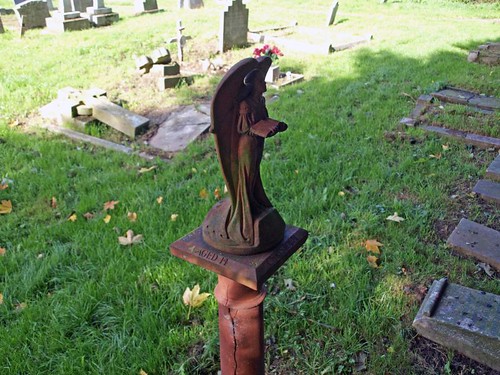St Mary & All Saints, locked no keyholder, has the presumption to post the guide to the church in its porch - this infuriates me: what is the point of publishing externally your internal history when we can't get inside to enjoy it? I feel a temporal pulse about to implode.
Luckily - or not, since I can't be the judge - the interior sounds dull but I liked both the location and the exterior.
I left, feeling frustrated, to look for the lost church at Little Stambridge which I could find no trace of - I think it's on private ground.
ST MARY AND ALL SAINTS. Evidence of a Saxon church, though very slight evidence. In the N wall of nave and chancel indications can be found of blocked small round-headed windows and the wall itself is too thin for Norman work. The S aisle was added to the nave c.1300, see the S arcade of three bays with octagonal piers and double-hollow-chamfered arches. - FONT. Octagonal, Perp, with concave sides and quatre-foiled panels with shields etc. - PLATE. Elizabethan Cup.
GREAT STAMBRIDGE. It lies almost within hail of the barges plying on the River Roche, and has an old timbered inn which has seen its 500th birthday, and a church that has seen about twice as many years.
The quaint 15th century porch has fine beams in its roof, but more remarkable is the wall to which it is attached, for it was standing before the Conqueror set foot in our land. As high as the arm can reach, Saxon masonry supports the tower, and high in the chancel wall are the stones which framed the head of a Saxon window. Three pointed arches show that the Saxon building was enlarged about 1300. The tower and the bold font are 15th century. There is a window in memory of Emily Keightley, who left this quiet rectory to give her life to the children of Ratcliff Highway. She died in 1905 and is shown with three little friends, while on each side are medallions with scenes in the lives of Christ and St Martin.
Here was born in 1745 John Harriott, who reclaimed Rushley Island from the sea and added it to his native county. He spent the last years of his busy life as magistrate, and promoted a police force on the Thames a generation before we had an organised force on land.
The quaint 15th century porch has fine beams in its roof, but more remarkable is the wall to which it is attached, for it was standing before the Conqueror set foot in our land. As high as the arm can reach, Saxon masonry supports the tower, and high in the chancel wall are the stones which framed the head of a Saxon window. Three pointed arches show that the Saxon building was enlarged about 1300. The tower and the bold font are 15th century. There is a window in memory of Emily Keightley, who left this quiet rectory to give her life to the children of Ratcliff Highway. She died in 1905 and is shown with three little friends, while on each side are medallions with scenes in the lives of Christ and St Martin.
Here was born in 1745 John Harriott, who reclaimed Rushley Island from the sea and added it to his native county. He spent the last years of his busy life as magistrate, and promoted a police force on the Thames a generation before we had an organised force on land.

No comments:
Post a Comment